Soul Calibur 5 Walkthrough
The Soul series is back with Soul Calibur 5 for another round of blood and breasts, with an extra emphasis on the breasts. Ludicrous breast physics arent the only great leap forward in game design on display here, as the vastly expanded character creation system can attest to. Not only can you create your own fighters, you can also take control of a whole swarm of new characters available in Soul Calibur 5′s massive roster, many of whom have changed in the seventeen years since Soul Calibur 4. A new main protagonist, Patroklos, takes center stage in an all new story-driven fighting campaign covered over a dozen episodes. The soul burns!
If your soul demands more information on the fighting game opus known as Soul Calibur 5, check out our trophies and achievements pages. For extra, unique, or bizarre special articles all related to the game itself, browse on over to the cheats page.
Check back after release for new updates!
Ezio Character Guide
Story Mode Prologue
Welcome to the Soul Calibur 5 text walkthrough. Before we get into the nitty gritty of Story Mode, let’s go over the basics of Soul Calibur’s fighting system.
If you’re already familiar with these concepts – don’t worry, this won’t take long. Skip to the next page. First off, there are three types of attacks; the horizontal strike, the vertical strike, and the kick. Combining these attacks will perform a variety of special moves, you’ll find that the [L1/L2/R1/R2] or [LB/LT/RB/RT] buttons all work as quick-keys, activating certain combinations of the three attacks, or of guard.
Guard stops you in place and allows your character to duck and jump. If you aren’t holding guard, you’ll enter into the 8-way run. Guard, combined with horizontal or vertical strikes, will produce a grab. Just stick near an enemy, and try to catch them when they least expect it. With every grab, you’ll see a golden glow. If you try a grab of your own during this glow, you’ll (Or your opponent) will break free. You don’t need to worry about throw-escapes with early from the AI, though.
Another function of guard is the just-guard. You need performing timing, hitting guard then releasing just as an enemy lands a strike. This will allow you to make a counter-attack and stagger your opponent. Surprisingly, just-guards will also block any unblockable attacks.
A major additional change to Soul Calibur 5 is the inclusion of the Critical Gauge. Once filled up halfway, you’ll see a large number ’1′ over the gauge, you can use special Brave Edge attacks. These are all unique to each character, you’ll have to hit the Training Room to practice these tricky moves.
There are two other uses for the Critical Gauge. The Guard Impact and the Critical Edge attack. Guard Impact is simple, combine all three types of attacks and press forward to perform a Guard Impact. Use it just before an enemy’s attack, and they’ll be staggered, instantly becoming easy prey for one of your combo attacks.
The Critical Edge is a special move that also ones half of your Critical Gauge – or one full bar. This move is shared, every character activates their Critical Edge attack the same way. Two down-to-forward quarter rolls combined with all three attack commands. Check out the move list for more details, but you’ll need to experiment with each character’s unique Critical Gauge, they all attack in special ways you’ll need to be mindful of.
Now that you’re familiar with some of the basics of Soul Calibur 5, I recommend that you start your journey through Story Mode by jumping into the Training Mode, through the Offline Play option on the front menu. From there, you can begin to practice with Patroklos. He’ll be the first character you use in Story Mode, and also the one used most often.
We’ll talk more about Patroklos during Episode 1, where you’ll start your first foray into Story Mode.
For now, enjoy the Prologue! It’s just a cutscene, after it finishes, you’ll move on to Episode 1.
Episode 1
Starting the first real fight in Story Mode, and this should be a breeze for veterans and beginners alike. Take this time to become more familiar with Patroklos and his moveset. Your opponents won’t put up much of a fight at the standard difficulty level.
If you’re a veteran, of just feeling brave, boost up the difficulty now. Every fight will net you extra points and you’ll increase your level faster. Leveling is mostly used to unlock customization options, but there are other rewards as well – such as opening new routes in Arcade Mode.
If you’ve been practicing with Patroklos, here are some simple tips to keep in mind. First, Patroklos isn’t much of a horizontal fighter, most of his best combination attacks are vertical. Vertical moves give him good reach, but you’ll have to watch out for annoying quick fighters that use 8-way running to their advantage.
One of Patroklos’ most basic and best vertical attacks is Forward B.B.B, if your opponent is guarding, make sure to end the string after two attacks and switch to something else. A+B Back is useful for a strike-and-fade approach, and Down A+B will break through a mid-guard with a low attack. Forward-Down B is a prime launching attack.
Always watch your Critical Gauge. Patroklos’ Critical Edge is very useful and easy to land. You only need to be standing just out of grapple’s range to use. It cannot be guarded against by a standing opponent. Practice using it when you can to defeat the next three opponents. It’s best to save Critical Edge attacks during a combo of your own, or to interrupt an opponent’s combo. Just don’t let your opponent land a hit on you while performing, or it’ll break. That goes for every character.
Expect to use Patroklos for most of the story episodes. There will be changes – the most daunting problem to overcome in Story Mode is always learning the various characters and their movesets. The opponents will start to put up a good fight eventually, but not anytime soon.
Consider this a training fight. There’s one trick that can make this fight slightly more difficult than others – if you lose once, you’ll have to retry the fight.
To the fight proper, you’ll be fighting a series of three rebels. Each of them will be using a different moveset from a different character. Don’t worry, they won’t make use of Critical Edges or even combination attacks. They’ll stick to single attacks. Be quick with your guards.
The first of the rebels uses Hilde’s moves, the second rebel uses Astaroth’s, while the last uses Raphael’s. Each subsequent fight will ramp up the difficulty. The second rebel fights harder than the first, the third harder than the second.
There’s no special strategy to these three – expect Astaroth to use his aggravating charge move that dodges high and mid attacks, so focus on low or vertical blows and practice your quick step.
Each of these three rebels are likely to run directly toward you without using an attack, making them easy early prey for any combination you can pull out. They also like to run mindlessly into grappling distance, wait, and block. When they attempt to do that, it’s your chance to use a throw.
If you’re having trouble, don’t feel bad about spamming throws. Just let these three come to you, don’t bother chasing after them. If you’re not ready, you might take an early hit if you’re too aggressive.
Play it safe and win each fight, and save your Critical Edge attacks for last. The one benefit of fights against multiple opponents is that while you continue to gain Critical Gauge energy, your opponents do not.
Episode 2
Continuing on, you’ll pick up where you left off with Patroklos. This time you’re facing ZWEI, a unique character with a very special set of moves. For this fight, you’ll be back to standard fighting rules – three rounds for each.
Luckily, during this battle ZWEI’s moveset is severely limited. He won’t use his unique abilities, instead sticking to just his sword. Due to his weak reach, he’ll try to circle around you as he gets in close. Patroklos doesn’t have a strong set of horizontal attacks, but a single horizontal will stun ZWEI long enough to keep hitting him with something else.
While ZWEI is down, try using Down A+B to deal a little extra damage with a low attack. While ZWEI, normally, would be a formidable opponent, he’s completely handicapped for this battle. The most dangerous thing he can do here is circle around and throw you from behind.
Overwhelm these early opponents with attacks, there’s no reason to be defensive. Charge them and just keep hitting with attacks, combo, special, whatever. It doesn’t matter, they’ll try to guard, but they aren’t aggressive or good enough to make you pay for bad choices. Good players can use overly aggressive strategies to their advantage, but the slow AI won’t be able to keep up.
Episode 3
Back with Patroklos, you’ll be facing off against Voldo. A staple of the Soul Calibur series, Voldo is also a very strange character to fight. He doesn’t have much range, he isn’t fast, but his attacks come furiously. His dangerous stances can place him very low to the ground where mid or high attacks will miss and you’ll have to peg him with a low strike, all while he’s spinning his massive blades in every direction.
This is an early fight, so don’t expect to see the worst that Voldo has to offer. Right away, Patroklos has an advantage, his Critical Gauge is half-full. No reason to squander that power, use a Critical Edge or a Brave Edge on him early before your gauge is full.
One of Patroklos’ signature moves is his A+B vertical strike. It’s slow, but has long range – and one bonus, it has a Guard Impact property. Wait for an enemy to strike, then his A+B to stagger them and land this attack full-force.
Like your previous opponents, Voldo really likes running directly at you and standing around. Use throws liberally when he makes himself vulnerable.
Another aspect of Voldo you’ll want to watch out for – he can guard while turned away, and even has a series of special attacks connected with that stance. Most characters do have moves associated with a turned-around stance, but Voldo takes it to a new level. Beware of Voldo looking away, he can be more dangerous than when facing front.
Otherwise, Voldo is an unwieldy and sluggish opponent when not used properly. He’ll spend just as much time standing in place and guarding as he will try to attack. While he’s guarding, move forward and hit him with something unblockable, or a simple low attack. Finish him off and move on to bigger and better things.
Episode 4
Back at the Wind Fortress, Patroklos must face off against Siegfried and his giant sword. Siegfried is a slow opponent, but with some real range thanks to that blade of his.
Siegfried is all about momentum. Don’t let him build up momentum, and he won’t be able to deal significant damage. Be prepared for vertical strike, his horizontal moves are slow but difficult to dodge.
If you watch Siegfried, you’ll see that after most attacks, he’ll pause in a different stance. These stances lead to new branches of special attacks for Siegfried, and they’re his major strength. The AI here won’t press too terribly hard on your skills, so you can expect a second or try between each attack. While in his stances, Siegfried won’t be blocking. Take advantage of those vulnerable moments to demolish him.
Your best bet is to diminish the benefits his extra range provides him. Rush in close and use quick combinations to stagger and break his attacks as they wind up.
Episode 5
Taking a break from Patroklos, you’ll take the reigns of Pyrrha for the next few episodes. Pyrrha uses a similar sword and shield style as Patroklos, so the actual style of play will remain similar.
Before beginning the next episode, it’s always important to overview a new character. Pyrrha’s short sword gives her limited range, but her shield affords her good defense and Guard Impact abilities. The best course of action as Pyrrha is to always move in close, stay close, and use guard effectively.
Pyrrha is a fast attacker, able to dish out quick strikes at relatively close range. While fighting close, remember to look out for grabs. A horizontal throw (A+G) can be broken with the use of a horizontal attack while a gold-ish yellow light appears. The same works against vertical throws (B+G), except you’ll need to counter with a vertical attack instead. Put the input just as you’re grabbed and you’ll break free and have a chance to punish your opponent for their mistake.
Some useful moves for Pyrrha are her A+B standard Guard Impact, followed by a Forward-Forward+B strike. A good way to close in on your enemies is using Pyrrha’s stance, the Angel Step. A quick quarter-roll forward will move her forward and dodge any high attacks. Follow Angel Step up with a two vertical swings to hit mid and high to confound your opponent’s blocking.
Pyrrha’s best sidestep attack is her Plasma Blade. She has others, like Down-Down-B, but they can leave you vulnerable to counter-attacks if you miss.
The Critical Edge for Pyrrha is another useful tool that isn’t easily dodged or blocked. It’s best used after launching your opponent, or to interrupt an incoming attack. Always save your Critical Edges for when your opponent is vulnerable, later in the Story Mode itself the AI will always see the Critical Edge coming if you don’t hit them when they literally cannot guard against it.
Back to the actual episode. Here, you’re facing off against three random custom characters. None of them will put up much of a fight – consider this your training stage with Pyrrha. Try out some new attacks, and check out her Move List in the start menu.
The first of the three is Xiba. Lucky for you, Xiba isn’t as fast as Pyrrha in close range. His staff is mostly used for mid-range combat, if you move in close and use Pyrrha’s effectiveness at close-range combat to your advantage, you’ll make short work of Xiba.
Xiba’s biggest problem is his reliance on stances to attack, giving you a special edge at close-range as he has to prepare his next attack. Don’t let him.
Second, you’ll be faced a custom Natsu. Unlike Xiba, Natsu is perfectly suited for close-range combat and is actually more of a purely offensive character than Pyrrha. Her combos and attacks come especially fast. Effective use of guarding will throw off most of Natsu’s combos.
Natsu isn’t one to guard well, but you will need to look out for her fast movement. Don’t overreach and enter into combos just after one of her attack strings, focus yourself and pick at her health when he’s most vulnerable.
The AI here isn’t as aggressive as a real Natsu player, and won’t use her most damaging or dangerous ninjitsu skills. Move in close and try to confound him with your sidestep move, and don’t forget to attack low while they’re on the ground.
Last up is a custom Mitsurugi. He uses a very plain fighting style, mostly consisting of offensive and vertical attacks. Most of his range comes in the form of long thrusts that can be easily side-stepped. Pyrrha doesn’t have amazing horizontal control like certain characters, but she does well enough at close-range.
Another weakness of Mitsurugi is his reliance on high blows. Use Pyrrha’s Angel Step to close the distance, dodge his high attacks, and hit him with a strike of your own. Mitsurugi is also weak to counter-attacks, is he whiffs with an attack, he has no easy escape.
The AI for Mitsurugi here isn’t especially punishing, fight him as you normally would, make effective use of guards, move in, and strafe around him with horizontal attacks to escape his deadly forward-slashes. With him gone, you’ll move onto the next episode.
Episode 6
Another set of three custom opponents block your path forward. While still relatively simple and unengaging, they’re still a step up from your previous fight. Take everything you’ve learned about Pyrrha and make good use of it, because these three might put up a fight if you’re not careful.
First is a custom Siegfried. This guy is all about range and stances. It takes him time to wind up, but when he gets going he can be difficult to stop.
This Siegfried won’t be especially dangerous, but you still have to watch out for his ranged attacks. Wait for him to whiff with an attack, then rush forward and go to town. Break his stances while he tries to wind-up an attack, and use grabs, the AI won’t stop you. Punish him while he’s on the ground, and you’ll move on.
Siegfried plays defensive when close, and will try to use some of his fast single-strike attacks to know you back. Mix up your combos here, attack high, then low. Launch attacks will help put Siegfried on his back, anything like her diagonal-down-forward+B will do the trick.
Your second opponent is Yan Leixia. Similar to Pyrrha she uses a short sword, but without the shield, she loses the defensive quality and relies purely on quick strikes and offensive, but at the same range.
Leixia is fast, and will try to interrupt any close-range attacks with pokes of her own. Focus on low attacks, knock her back or off her feet, and use effective guards. If you can get the timing right, try to practice your Guard Impacts now. Lexia doesn’t have the annoying speed of Natsu, so you’ll have a better chance at effectively using Impact without getting yourself caught in a combo, if you’re a Soul Calibur beginner.
Hilde’s bringing up the rear, coming at opponents with two weapons at once. Despite have two weapons suited for long-range and close-range, she’s not especially fast with either style of fighting.
Like all long-range characters, you’ll need to close the distance with Pyrrha to really make use of her effective swordplay. With these AI opponents, you have two options. Wait for them to whiff an attack at the beginning of a fight, then rush forward, or use Pyrrha’s Angel Step. While Angel Step is very effective, it doesn’t guarantee a safe trip.
The trick to fighting Hilde is patience. Don’t throw yourself at her right away, instead you’ll want to carefully manage your attacks and wait for openings. The AI here will carelessly launch himself at you, making your job that much easier.
Episode 7
With that episode done, you’ll return to the familiar fighting style of Patroklos. By now, you should have a good idea of how Patroklos works, but your opponent is Tira. She’s a chaotic opponent, with two unique movesets you’ll need to look out for.
Tira fights in two modes; Jolly Side and Gloomy Side. She always begins every first round of a fight in Jolly Side, but certain attacks, effects, or instances will cause her to transition over to Gloomy Side. While fighting in Jolly Side, she’s actually much less dangerous. You want to look out for Gloomy Side.
Tira is a schizophrenic opponent. You can tell which mode she’s in by her stance. While Jolly, she’ll stand up straight and sway, but while Gloomy, she’ll slump and hand her head down. Gloomy Side never lasts long, but it can be devastating.
Get in close with Patroklos and use his defensive advantage to confound Tira while she’s Jolly and doesn’t have the speed advantage. Trick her into making mistakes and wait patiently for her to attack. You’d think a girl with a bladed hoola-hoop would do wonders in horizontal combat, but she can be easily side-stepped.
Patroklos’ Guard Impact is always useful at these ranges, especially when Tira switches over to Gloomy Side and gets aggressive. Use her bolstered AI confidence to play defensively and hit her with quick pokes to knock her out of the stance.
Either way, this is the tutorial for Tira, next fight she’ll try harder.
Episode 8
Time to fight Tira again, and if you’ve learned anything about the girl in your first fight, this one shouldn’t be too hard. The AI steps up the aggressiveness and speed, but does so at the expense of surprise. Use your previous experience against Tira, she hasn’t changed so much in the last few minutes between cutscenes.
What makes this fight trickier – Tira tends to begin each round with Gloomy Side. Also, both fighters start with full Critical Gauges. No reason to save it, use your Brave Edge or Critical Edge attacks as early as possible. You’ll gain more as the fight continues, just don’t whiff and give your opponent the edge with more Critical Gauge.
Tira will show off one of her deadliest attacks, a launch followed by a jump that drills Patroklos into the ground. Be especially mindful of her low attacks. She’ll attempt to knock Patroklos off his feet with a horizontal combo, ending with a final low attack. Block mid then low.
Avoid her Gloomy Side and use that Critical Gauge to make this a short but intense episode.
Episode 9
Say hello to Astaroth. This lumbering opponent brings massive range, but trades off speed. Astaroth, unlike other ranged giants in Soul Calibur five, is completely vulnerable at close-range. He has no fast single attacks to drive opponents away, so expect lots of blocking, throws, and attempts at Guard Impact.
What makes Astaroth so damaging are his combination attacks following by a throw. If you’re caught in one of his strings, there’s a good chance he’ll try to end it with a throw to pile on the extra damage.
Because of Astaroth’s reliance on throws, prepare yourself mentally for throw-breaking. Remember, horizontal-throws and guarded by a horizontal input, while vertical-throws and guarded by a vertical-input.
Vertical-throws are deadlier in general, expect Astaroth to always attempt them more often. He will always go for the jugular. In response, try throwing the behemoth yourself.
Compared to the last fight, Astaroth should be breeze. Like Pyrrha’s Angel Step, use Patroklos’ stance Justice Step to edge closer to Astaroth and deliver a knockback blow. Due to Astaroth’s size, most of his quickest strikes will land high. Sail beneath him, get in close, and go nuts.
The AI won’t be skilled enough to escape a varied set of attacks. Switch between mid, then low, then launch, kick, side-step and repeat. Astaroth will barely fight back.
Episode 10
Patroklos is too wounded from his fight with Astaroth, so you’re back to using Pyrrha for the time being. She’s similar enough to Patroklos that you shouldn’t have too much trouble transitioning over, but you’ll also have to deal with a far stranger opponent than Astaroth.
Voldo is back, and he’s bringing more to the table AI-wise. Luckily, Pyrrha starts with half her Critical Gauge filled while Voldo has nothing. Go ahead and get in a Brave Edge attack to finish off this first round, but we’ll get to that later.
If you remember fighting Voldo in Episode 3, you should know that nothing has changed. But, Voldo’s elaborate evasive stances will appear full-force. He’ll crab-walk more often, forcing you to use any low attacks you can muster. A single or two-hit combo is enough to ward him off, just do it quickly. Slower combination attacks might be interrupted, as Voldo picks up speed while low to the ground.
Voldo is a very vertically based fighter, and most of his attacks won’t hit horizontally. Move in close and side-step to stagger him, then get in a few simple combo commands, such as B+B.
Something Voldo loves doing is rolling forward, or mindlessly flailing while in a low stance. Wait for him to attack, in these stances he can only strike vertically. Use the 8-way run to disorient Voldo and hit him from the side where he’s defenseless.
Episode 11
Welcome to the first serious challenge of Story Mode. You won’t be playing as Pyrrha anymore, instead, you’re Pyrrha Omega.
She’s far more advanced than her previous incarnation, providing extended range and damage-dealing potential at the expense of ease-of-use. Pyrrha Omege can be devastating, but she can also put you into situations where your attacks can be guarded, side-stepped, and countered.
Stop and take a moment to test some of her abilities. You won’t have much of a chance, as you’re fighting against Nightmare in this battle. Nightmare himself is, well, a nightmare to fight. Having to learn a new character’s moveset while facing one of the deadliest AI opponents in Soul Calibur 5 won’t be easy.
To start, get used to Pyrrha Omega’s forward-roll-B strike, or the Nemesis Step + Vertical attack input called Nemesis Strike. At close-range, her Back+K kick has Guard Impact properties, making it perfect for interrupting an incoming poke.
Taking a step back, the Nemesis Step stance is exactly the same as Angel Step or Justice step, except for one factor. Quickly performing the roll twice will reward you with a Double Nemesis Step, adding additional power to your already powerful stance attacks.
For aggressive players, this battle might actually be easier, thanks to Pyrrha Omega’s additional speed and power. If you catch Nightmare at his weakest, you can cream him with a series of attacks and end each battle with barely a scratch.
Going back to the actual episode, Nightmare himself won’t play as aggressive as you’ll experience him in Arcade Mode, as one of the final bosses.
Nightmare might be slow, but once he starts swinging he can be very difficult to stop. He deals mostly in attacking you when you’re most vulnerable, waiting for a player to create an opening and then exploiting it.
Close-combat characters like Pyrrha will want to stay in close-range, otherwise Nightmare will have all the time he needs to wind-up his powerful strikes. Poke him to interrupt big attacks, then knock him down and throw him around with combinations.
Nightmare’s biggest annoyance for close-range characters are his counter-Critical Edge and Guard Impact moves. Watch out for that green glow, and attempt to grab him instead of throwing multiple attack strings into his guard.
Episode 12
A new episode brings a new fighter for you to control. ZWEI has a unique moveset that’s unique in the Soul Calibur series, you won’t find anyone else like him. You’re about to find out why.
Your Critical Gauge starts full, giving you an edge, and enough meter to try out some Brave Edge or Critical Edge moves against your opponent, Patroklos.
Thankfully, you should be familiar with Patroklos’ fighting style by now, and can expect him to try and move in close while nailing you with quick pokes. ZWEI doesn’t have the kind of power or speed of Patroklos, but he does have a spirit-wolf-thing.
The wolf is named EIN, and can be released after most attacks to really boost ZWEI’s combo power and knock your opponent back. It’s his one edge, it gives him extra range and strength, while also scaring away any potential counters from your opponent.
With ZWEI, you’ll want to get a feel for EIN, when to charge your attacks, and how to unleash him as quickly as you can during an attack. EIN is strong, but he’ll only appear after your normal attacks.
ZWEI’s Critical Edge is very easy to use, perfect to end a combo or interrupt an enemy attack. It has good range and deals a fair amount of damage. Use it during this battle early on to gain an edge, Patroklos won’t guard often.
Your time with ZWEI will be brief, but a fight in the future will really test your skills.
Episode 13
While ZWEI was obviously a unique character, this episode introduces a new version of Patroklos. Similar to Pyrrha Omega, Alpha Patroklos is a more advanced version of Patroklos, as well as being the main character for the remainder of Story Mode.
Get some revenge against ZWEI and put in practice as Alpha Patroklos. Once again, you’ll have a full Critical Gauge to practice his close-range forward Critical Edge, which is another simple to use Critical Edge that’s best used in conjunction with combos.
If you haven’t already, take a look at Alpha Patroklos’ movelist. Right away, you can see just how difficult his selection of moves can be without practice. If you haven’t unlocked Alpha Patroklos already, you will after this episode. ZWEI won’t fight too hard.
Replacing the Justice Step is the Dawn Haze and Twilight Haze stances. Both are powerful, help avoid high attacks, and give you access to many of Alpha Patroklos’ most essential moves.
One of the simplest attack strings available to Alpha Patroklos is a Back-Down-Diagonal:A:A:A combo, giving you a good option to punish your opponent during any situation. It hits low, making it perfect for when switching up your high/mid/low strikes.
If you’re so inclined, Alpha Patroklos’ regular horizontal-throw is perfect for causing ring-outs when you’re near the edge of the arena. It’s always good to keep in mind.
As for ZWEI, he’ll use every tool in his bag of tricks during this fight, but he won’t cause much trouble. Alpha Patroklos’ moves have built in mix-up properties, often switching between low/mid/high strikes, something the AI will have trouble guarding against for the remainder of Story Mode.
Like original Patroklos, Alpha Patroklos is a close-combat fighter. Move in close, and enjoy the benefits of his enhanced speed with those poke attacks. ZWEI doesn’t have the dangerous range of Siegfried of Astaroth, but he does have EIN. Poke him before he can summon the wolf-monster.
Fighting ZWEI is all about knowing when EIN will appear. After EIN vanishes, you’ll have a safe opening of attack. Alpha Patroklos, like Nightmare, is all about punishing mistakes and whiffs. Run in close and mangle ZWEI with fast strikes and mix-ups.
Episode 14
Your next opponent is Ivy, a long-range fighter that controls her opponents with a sword that breaks apart into a whip. Alpha Patroklos is all about close-range, so you’re going to want to close the distance and bum rush Ivy with a series of push attacks.
Ivy is all about complex combination attacks, her close-game is weak, as her choices for quick pokes are very limited. What she wants to do is crouch and use her various whip positions to trap and control your movement from afar where she can handle you, push you back, and hit you with painful throws.
Like all long-range opponents, stay back and wait for her to mess up. Her recovery time for most attacks is terrible, just don’t fall for her traps. Often, it’ll appear her chain is finished, but in actuality she’s merely transitioning from one stance into another and preparing another special move.
Alpha Patroklos has a good low hit game, and his stance will duck beneath high attacks, giving you a quick advantage against Ivy. Use those deadly Dawn and Twilight Haze moves and guard against any simple attacks she’ll use to push you back.
Ivy will try to hurt you when you’re on the ground. To avoid taking more damage, roll first. Rolling left or right is just one way to avoid taking instant damage when on the ground against aggressive AI.
Otherwise, just keep the pressure on Ivy. Alpha Patroklos is particularly good at laying down a series of quick, confounding attacks that Ivy will have trouble guarding against.
Episode 15
This fight is when things get tricky. Here, you’ll be fighting four actual opponents, each of whom has the AI to put up a fight. These aren’t custom made mooks. You’ll have to deal with four of the Asian-themed characters, in four fights, but you’ll only have to defeat each once. If you lose, you’ll only have to repeat the single particular fight you lost to, so you won’t have to re-fight everyone else if you get to Xiba.
Here, you’ll be fighting Leixia, Natsu, Maxi, and Xiba – in that order. There’s no perfect way to fight this battle, just have patience and keep retrying if you fail. Take some time to recheck Alpha Patroklos’ moves and give yourself a refresher before heading into this fight.
Leixia is a quick close-range fighter with a Chinese Sword. She isn’t especially powerful, but her combos can catch you easily, and she likes to move around the battlefield. Deploy horizontal attacks to deny her 8-way running coverage.
If you remember the custom opponent in Episode 6, you remember Leixia. Xiba and Natsu were in Episode 5, while Maxi is your only new opponent if you’ve been sticking with the Story Mode.
Natsu, just like Leixia, will try to circle-strafe around your attacks. Stop her running with a quick horizontal swing, or any of Patroklos’ own quick-step attacks, then follow-up with a cruel string of combinations.
Maxi is the ultimate 8-way runner, and can be a real pain to fight in Quick Battle in the higher ranks. He ducks and weaves while unleashing long series of super-fast but low damage combos.
The biggest fault in Maxi’s game are his lack of ranged attacks. Even his close-range combat must be especially close to be effective. Alpha Patroklos doesn’t quite have those limitations, making a fight at mid-range possible and almost preferable than trying to guess what Maxi’s next looping string of attacks will be.
The ultimate annoyance of Maxi comes in the form of interrupts. He will almost always beat you to the draw in any series of attacks, and his horizontal game is pretty good too. Back off between attacks to give yourself some breathing room.
As a last bit of advice, use Alpha Patroklos’ Dawn Step combinations at medium range to devastate Maxi, just give yourself some space and time to accomplish the attacks. With Maxi out of the picture, you just have Xiba.
Obviously, Xiba’s AI is much improved over the last fight. He’ll guard more and punish you for your mistakes. But, with Alpha Patroklos, you should have no problem controlling the fight at close-range. Even if you do lose, just keep trying, you only have to manage a single victory against each of the four.
Episode 16
This is it, the big confrontation between Alpha Patroklos and Pyrrha Omega. Episode 15 offered a challenge, but this is where the fights will take on a whole new challenge. Every remaining battle in Story Mode will be significantly more difficult at this Episode. Keep practicing those Just Guards, and nail your inputs with Alpha Patroklos. If you haven’t already, take some time out to train with Alpha Patroklos.
Pyrrha Omega herself is a powerful fighter, with good mid-to-close range moves that cover a wide area of terrain at once. Even her simplest moves can connect with her opponents. A simple vertical attack combo can hit opponents trying to side-step to the right, it’s best to just guard and follow-up with an attack string of your own.
Some of Pyrrha Omega’s most consistent attacks are Nemesis Strike and the Styx Cannon, both deadly forward-vertical slashes. Both attacks have an extended reach, far enough to catch you at medium range. Both of these attacks land mid, making it easy to guard as long as it doesn’t catch you unprepared.
Both of the above attacks are fairly unsafe, giving you a good opening if you’re patient and can wait for Pyrrha to attempt an attack. Keep out of close range, and she’s sure to try one out of these two attacks.
Both attacks will also drop you on your back. Roll left or right, jump back up, or use a horizontal attack while rising to land a high attack.
Pyrrha Omega will stick mostly to high and mid attacks, she’ll never catch you in a deadly combo with low attacks. Use Alpha Patroklos’ Dawn Stance to duck under most of her usual ranged combos, just like the Styx Cannon.
Remember that Pyrrha Omega doesn’t have many good horizontal attacks either, giving you plenty of side-step opportunities. Just remember that Nemesis Strike will still hit.
Episode 17
Enjoy the cutscene! Otherwise, move onto the next episode for a significantly more difficult fight.
Episode 18
Story Mode is about to get a lot harder. If you haven’t had trouble yet, you’re about to have some problems now. This time, we’ll be dealing with two sets of battles. First, you’ll have to fight a set of three Malfested custom characters. After that, you’ll have to fight Nightmare at full strength.
The three custom warriors are nothing to worry about. You only need to fight each for a single round. They won’t offer much resistance, and shouldn’t slow you down much.
The real issue is Nightmare. He’s a killer in this battle. For this fight, you’ll be using Zwei, and you’ll issues with power and speed – Nightmare’s got you beat.
The fight begins with a full Critical Gauge, use it up as soon as you can to get an early edge over Nightmare. Use ZWEI’s vertical-input Brave Edge throws for easy damage against Nightmare.
The quick-witted Nightmare will take full advantage of your whiffs. This battle is all about careful use of your moves as ZWEI, and knowing his moveset carefully. Don’t throw out unnecessary moves that leave you open to attack, move in close and use effective guards.
The 8-way run will save you from Nightmare’s many forward-thrusts. Side-step attacks will do extra damage and spin out Nightmare, giving ZWEI a moment to charge up EIN and land the extra damage he needs to put Nightmare on the defensive.
At close-range, Nightmare loves using Guard Impacts and a deadly Critical Edge auto-Guard Impacts. Don’t attack carelessly, and annoy Nightmare with plenty of throws to avoid taking the Critical Edge on the chin.
Nightmare has limited moves at close-range, and he’ll rely on those auto-Guard Impacts. Don’t go crazy with the attacks, or you’ll fall for his trap.
Keep trying, Nightmare is a frustrating opponent that will punish your every mistake, and ZWEI has very few safely launched attacks. Take your time, carefully plan your moves, and just don’t whiff. Try, try again.
Episode 19
After the previous Nightmare fight, this battle with Pyrrha Omega will be a cinch. Every suggestion that worked in Episode 16 will work here, even though Pyrrha Omega will be more aggressive.
Just like before, use Alpha Patroklos’ stance to bow underneath most of Pyrrha’s high combinations, then land a powerful attack of your own.
Close the gap, move in close, and use your throws. Alpha Patroklos’ stance is helpful, combined with his vertical attack combo B-B.
Episode 20
The final fight of Story Mode is a doozy. Using Alpha Patroklos, you’ll be up against Elysium – but, Elysium will exclusively use Pyrrha Omega’s fighting style.
The only major difference between Pyrrha Omega and Elysium is her unique Critical Edge. This dangerous Critical Edge will hit you anywhere on the arena; standing, on the ground, or in the air. It deals out significant damage, but a guard will stop the entire string of damage.
Elysium’s Critical Edge takes a moment to land, she’ll hop back one step. Most often, Elysium will try to use her CE after a combo while you’re completely vulnerable.
The real trouble with Elysium is her capacity for punishment. If you screw up, she’ll take advantage and destroy you with a long string of combo attacks. You simply have to be more careful, guard, and side-step more often.
Side-step attacks can completely dismantle Elysium. Mist Cutter of Shade Barrage can get you far, just go Up-Up-A-A, or Up-Up-B-A.
Surprisingly, Alpha Patroklos’ simple A-A vertical two-strike combo is very effective against Elysium. Hold back, wait for one of Elysium’s mid strikes, then follow-up with an A-A combo. It won’t do damage, but you’ll be relatively safe.
Don’t forget to punish Elysium when she’s down or in the air. Elysium has grabby hands, if you’re very close, always duck low, stand up, and throw her yourself.
Save your Critical Gauge for the last round, as the arena will shrink in size and allow for ring outs. In general, Elysium will also fight harder in her last round, so a full Critical Gauge will always be helpful.
Keep trying! Don’t be discouraged, and if you are tired of failure, go ahead and select the option to restart with a lower difficulty. There’s no penalty, and you can always go back and give this battle another try on the normal difficulty level.
If you manage to win, congratulations! You’ve unlocked Legendary Souls Mode, which is far more difficult, and begun your journey into Soul Calibur V. Check out Quick Battle, keep gaining those levels, and keep learning about your favorite fighters.


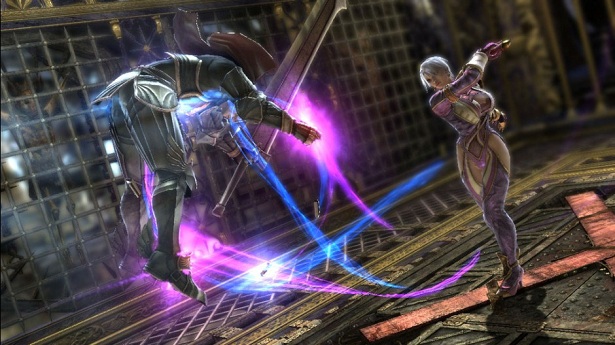
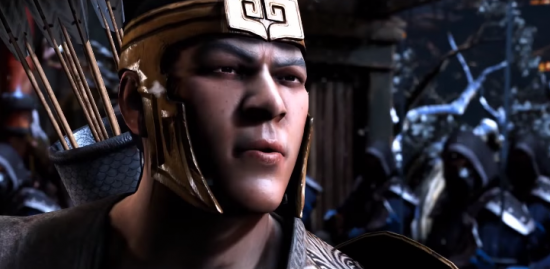
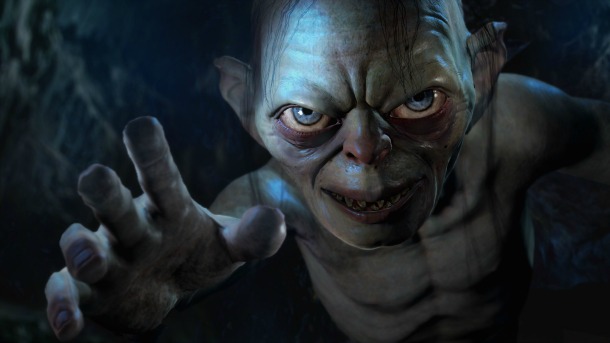
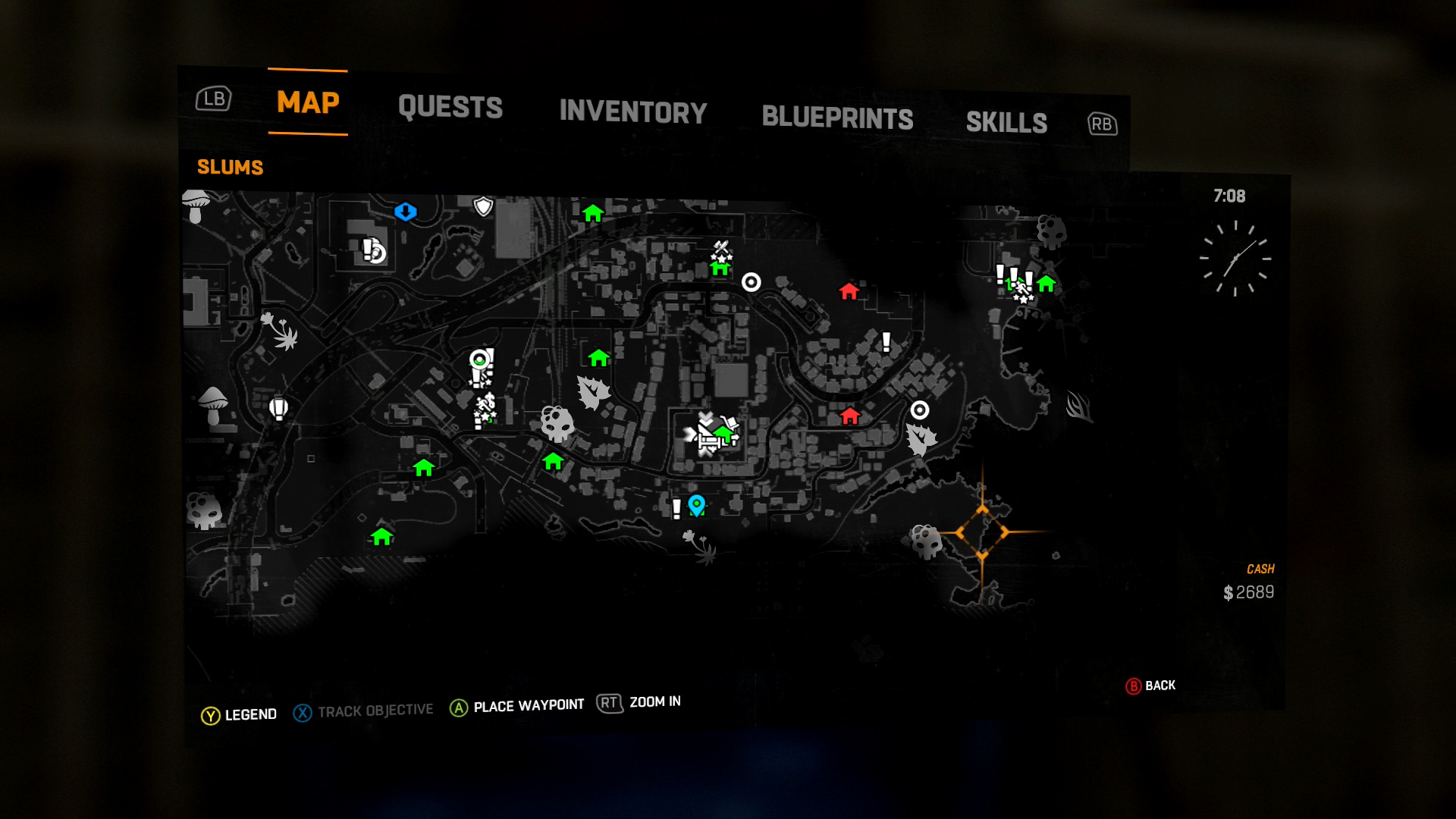
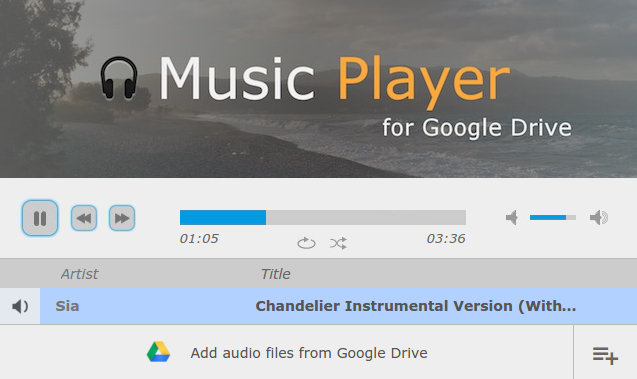
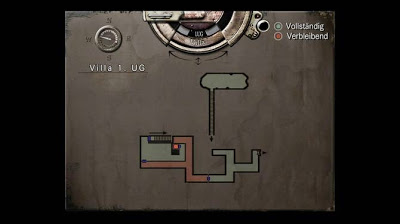 Resident Evil HD Remaster Walkthrough (Jill Valentine)
Resident Evil HD Remaster Walkthrough (Jill Valentine)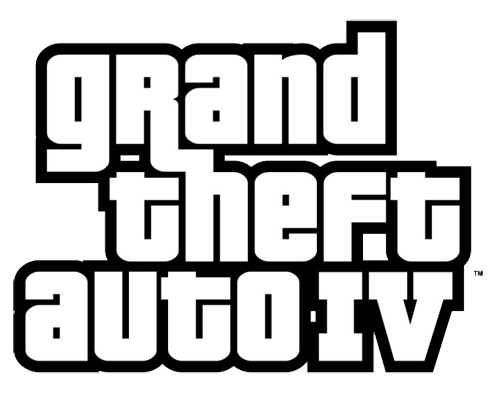 Grand Theft Auto 4 Guide
Grand Theft Auto 4 Guide Far Cry 4 (PC) King Mins Kyrat item list
Far Cry 4 (PC) King Mins Kyrat item list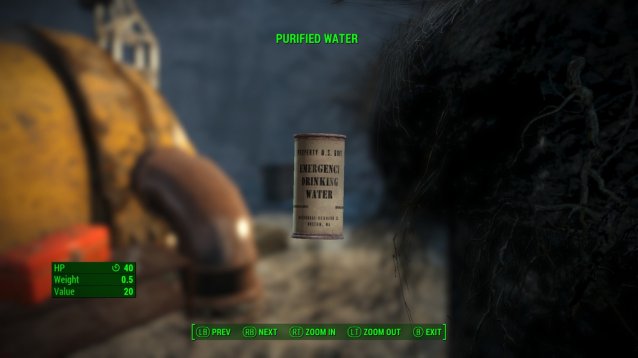 Fallout 4 Guide: How To Get Unlimited Adhesive
Fallout 4 Guide: How To Get Unlimited Adhesive 10 Unforgettable Covers of 2014
10 Unforgettable Covers of 2014